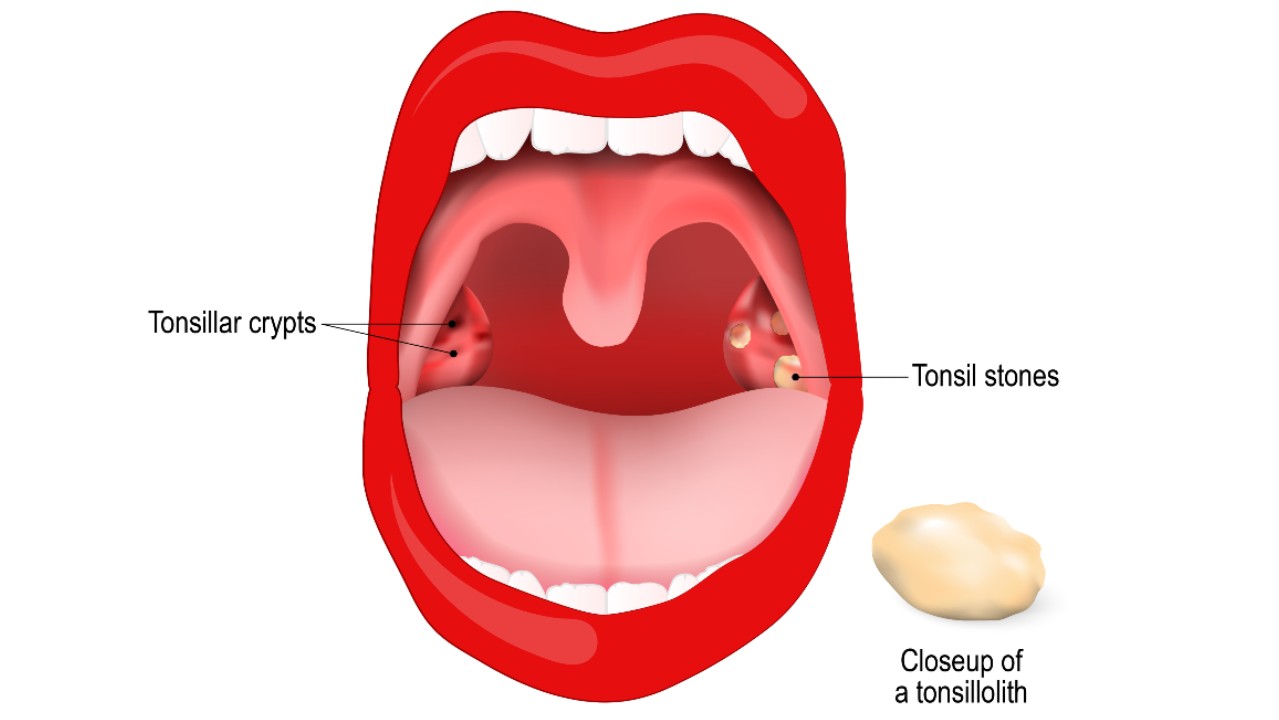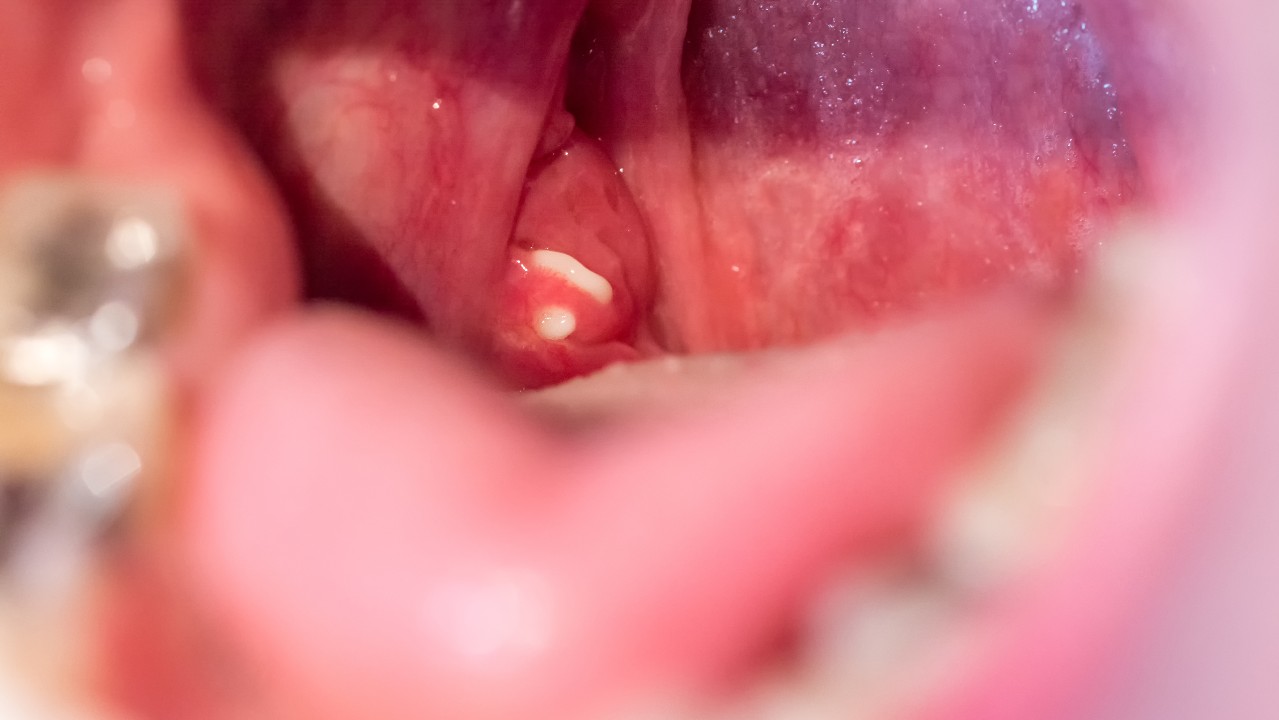What are Tonsil Stones? Causes, symptoms and treatments
Tonsil stones are a non-dangerous build up of bacteria which can be easily treated.

While tonsil stones may seem like a bad medical hoax, they can be a real problem. Tonsil stones, also known as tonsilloliths or tonsilliths, are benign accumulations of bacteria and debris in the crypts of some people's tonsils. Though this problem may cause discomfort, it is not dangerous and is usually easily treatable.
Causes
The tonsils are part of a protection system that keeps foreign objects from slipping into the lungs. They are also lymph nodes that filter for bacteria and viruses while producing white blood cells and antibodies, according to the Mayo Clinic. Objects such as food, dirt and other particles can get stuck in the groves on the surface of the tonsils. The grooves, called crypts, also collect old cells and bacteria.
The body's white blood cells proceed to attack the foreign objects stuck in the tonsils. When the white blood cells are finished, hard particles remain on the tonsils. Most people simply swallow what is left behind and never know that it was there in the first place. If the particles are lodged into the crypts, though, the particles will continue to grow. These growing objects are tonsil stones, which are also called tonsil calculi, according to the Cleveland Clinic.
According to a study published by the journal Otolaryngology–Head and Neck Surgery, tonsil stones are more alive than actual stones. Researchers found that tonsils stones are a living biofilm that breathes oxygen. A biofilm is a collection of microorganisms, such as bacteria, fungi and protists, that form a robust layer.
According to Dr. Alan Greene, a pediatrician and author, tonsil stones are most common in teens and those with large tonsils. Those with poor dental hygiene may also experience tonsil stones.
Symptoms
According to Dr. Alan Greene, a pediatrician and author, tonsil stones are most common in teens and those with large tonsils. Those with poor dental hygiene may also experience tonsil stones.
People with throat stones can also feel like they have something stuck in their throats, according to Dr. Erich P. Voigt, an associate professor of otolaryngology at NYU-Langone Medical Center. Other symptoms can include chronic, mild sore throat and reoccurring tonsillitis.
Get the world’s most fascinating discoveries delivered straight to your inbox.
Tonsil stones can often be seen in the mirror. The tonsils won't seem smooth. "Instead, they look like prunes, with crevices where bacteria can accumulate," said Chetan Kaher, a dentist in London.
Typically, tonsil stones can be seen as white, yellow or grey nodes on the tonsils. This isn't always the case, though. Many tonsil stones aren't visible because they are burrowed down inside of the tonsil, said Dr. Ileana Showalter, an otolaryngologist at Mercy Medical Center in Baltimore, Maryland.
Tonsil stones can grow to 1 to 2 millimeters across. But they can be up to 1 centimeters across, according to the Australian Government Department of Health.

Treatment
One of most common treatments to cure tonsil stones is simply scraping them off with a toothbrush. If that doesn't work, there are several other at-home options which are recommended by the Cleveland Clinic. "Gargling with salt water can help dislodge them. Using a cotton swab to express them from the little small cavities that are visible is another option," said Showalter. A water flossing device such as a Waterpik can also be used to power wash the debris out of the tonsils.
Sometimes the tonsil stones are so deeply embedded that they cannot be removed at home. In this case, an ear, nose and throat specialist can often remove the stones. If a person gets tonsil stones often, then the patient and doctor may discuss removing the tonsils.
"A last resort cure of this problem is tonsillectomy. However, this surgery carries risks of anesthesia, pain and bleeding, as well as other risks, thus a decision of this type must be balanced by a risk/benefit discussion," said Voigt.
Prevention
Preventing the formation of tonsil stones is as simple as good dental hygiene. The Mayo Clinic suggests brushing teeth and tongue after meals, at bedtime and first thing in the morning. Flossing teeth daily can also help by cleaning out bacteria. Voigt also suggested gargling daily suing commercial gargles, or a homemade solution of hydrogen peroxide and water. The Mayo Clinic advises against using a mouthwash that contains alcohol.
Additional resources
Check out the Mayo Clinic's self-care steps may help prevent tonsil stones from returning and The American Academy of Otolaryngology's webpage "Tonsils and Adenoids Patient Health Information", for advise on tonsil stones.
Bibliography
Paul Stoodley, et al, "Tonsillolith: not just a stone but a living biofilm", Otolaryngology, Volume 141, September 2009.
Matthew Ferguson, et al, "Halitosis and the Tonsils: A Review of Management", Otolaryngology, Volume 151, August 2014, https://doi.org/10.1177/0194599814544881
Balaji Babu, et al, "Tonsillolith: A Panoramic Radiograph Presentation", Journal of Clinical & Diagnostic Research, Volume 7, October 2013.
"Surgical treatments for tonsil stones", NHS: Kent and Medway Policy Recommendation and Guidance Committee, March 2020.

- Scott DutfieldContributor


